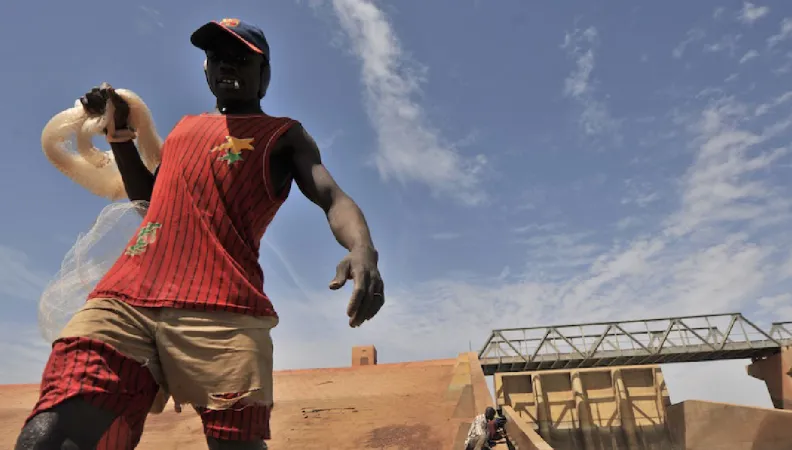Share the page
Equipping the Kandadji Dam hydropower plant
Project


-
Project start date
-
Status
Ongoing
-
Project duration
-
4 years
-
AFD financing amount
-
50 000 000 €
-
Country and region
-
Location
-
Niger
-
Type of financing
-
Beneficiaries
-
Republic of Niger
By cofinancing the hydropower plant of the Kandadji Program, AFD is helping Niger accelerate its economic development. The plant will indeed reduce the recurrent electricity shortages and allow the extension of irrigated agriculture, while promoting the use of local energy resources.
Context
The Kandadji Program is supporting economic development and helping improve the well-being of populations in Niger by promoting the use of local energy resources. The 130 MW hydropower plant situated on the Niger River will contribute to increasing and securing the country’s power generation capacity.
Indeed, despite the recent commissioning of the Gorou Banda thermal power plant (80 MW), the untimely outages during peak times continue to place a strain on the country’s economy. In the near future, the Government of Niger therefore wants to increase its power generation, diversify its production mix, reduce its dependence on energy imports and improve the competitiveness of its energy mix by reducing spending on hydrocarbons.
Description
The project involves the provision of hydro-electromechanical equipment for the power plant and is cofinanced with the World Bank. The facilities will be built in two stages with the following adaptations: a first for the operation of the dam at elevation 224, i.e. an average annual generation of 435 GWh, and the second at elevation 228 will provide an average annual generation of 660 GWh, bringing the total length of the dam embankment to 8 km.
Impacts
The overall objective is to contribute to reducing poverty by naturally regenerating river ecosystems, improving food security and covering electricity needs. It will replenish low water levels downstream, from where it will be possible to implement activities to achieve the objectives of combating the degradation of the ecosystem of the Niger River and securing socioeconomic activities in the area. The construction of this dam requires the displacement of some 50,000 people for which a resettlement and support program has been set up.


